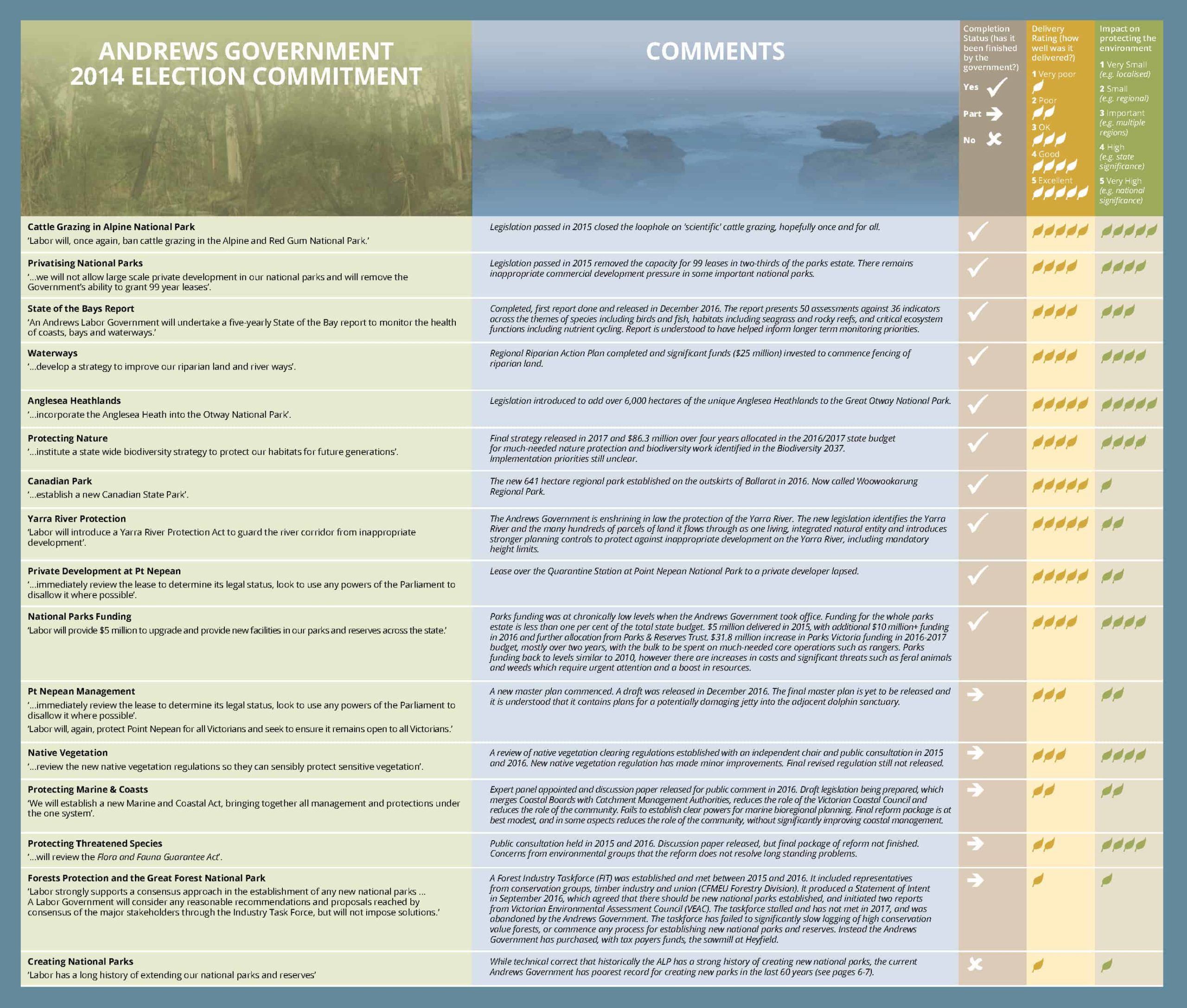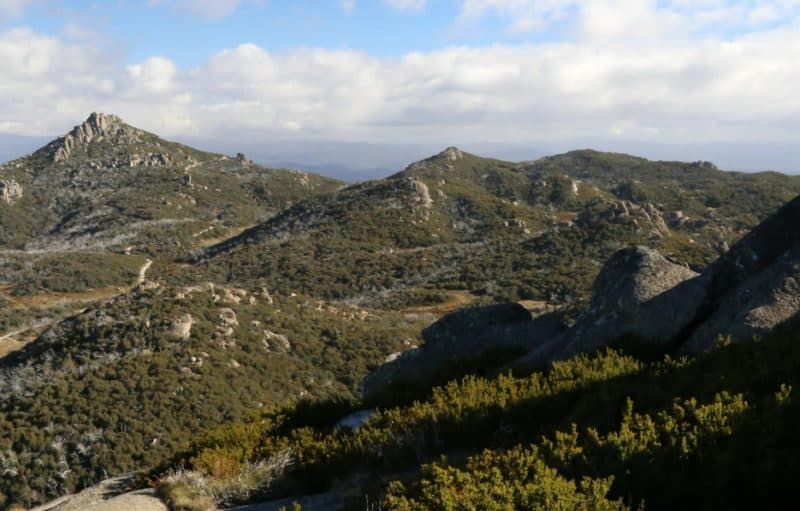PARK WATCH December 2017 |
Analysis of the Andrews Government at the three-quarter mark
It’s been three years of the Andrews Labor Government’s term in office, and we are now 12 months out from the next state election.
Of the sixteen nature conservation commitments by the Andrews Government in their environment policy Our Environment, Our Future, ten (or 63 per cent) can be considered finished (at least in terms of election commitments) and six have been commenced in part.
The rating here looks at two aspects. Firstly, how well the commitment was delivered; considering issues of policy or program scope, strength, clarity etc. Secondly, the extent of the impact the policy has on conserving the natural environment. On delivery, the Andrews Government scored 71 per cent due to some strong initiatives in the first few years in office. However, they scored only 48 per cent on impact due to the fact that some commitments, while important, are restricted in impact due to locality, scale or extent of change.
(Click on the image to zoom in)
The good, the bad, and the ugly
Delivery of election commitments are important, however governments need to be also judged on their dayto-day management of issues as they arise. This ‘housekeeping’ over four years in the environment space can be very significant.
While the Andrews Government has been strong on climate change and banning gas fracking, the management in the conservation arena has been a patchy. There have been some welcome interventions on individual logging coupes by the environment minister, in response to community monitoring or identification of important conservation values. The decision to commence a Victorian Environmental Assessment Council investigation in the forests of central western Victoria, including the Wombat, Wellsford, Mt Cole and Pyrenees Ranges state forests, is an excellent move. There have however been a number of clear missteps and blind spots.
The approval and licencing of commercial horse training at the Belfast Coastal Reserve is at odds with good environmental practice, and is arguably unlawful (see article page 23). The unusual approval process for the commercial boat tours at the Prom seemed at best back to front, with government statements supporting the project before any detail plan had been submitted. In the end the government formally endorsed project, but it all seemed to have an air of inevitability.
Probably strangest of the environment portfolio decisions was to ban revegetation except within ten meters on each side of the waterway in significant parts (the north-eastern corner) of the Yellingbo Conservation area in the Upper Yarra Valley. This is far from best practice revegetation or riparian restoration. This sets a very poor precedent.
VNPA has continued to push for the implementation of the Murray River Park. Before the 2010 state election, the Brumby Labor government was on the verge of protecting these reserves as part of the historic river red gum parks package. They were even legislated and handed over to Parks Victoria for management. But they were not formally gazetted or declared before that government lost power. The incoming Coalition government reversed that process and reissued more than 200 grazing licences. See: www.vnpa.org.au/future-parks/riverred-gum-and-murray-river-parks
While the commitment to implement the Murray River Parks was not made by the Andrews Government, it was part of the ALP Brumby government decision. The value of the Murray River Park is recognised in the Andrews Government’s Regional Riparian Action Plan as “…contributing towards improving the protection and management of riparian values”. The Andrews Government continues to ignore this piece of unfinished business.
The proposed jetty in the dolphin sanctuary zone in front of the Quarantine Station at Point Nepean has persisted throughout the park’s master planning processes. It is a very bad idea as it threatens the endangered burrunan dolphins, and will divert scarce resources critical to restoring and adaptively reusing the park’s heritage buildings. On the other side of the bay, over-the-top resort, residential and marina development proposals for the Moolap-Point Henry area would waste the opportunity to create a significant conservation park on the front doorstep of a rapidly growing Geelong. Both Point Nepean and Moolap need better protection from Labor.
Importantly, while the state government has funded an increase in the number of park rangers, it is still far from addressing the significant management issues in our parks: the state’s deer population is now around one million animals; feral horses remain a significant threat to the Alpine National Park; and there is insufficient funding to deal with many other pest plants and animals.
Meanwhile visitor services, like signage and tracks, are still deteriorating. Our remarkable conservation estate needs far more than the puny half of one per cent of the state budget it currently receives.

